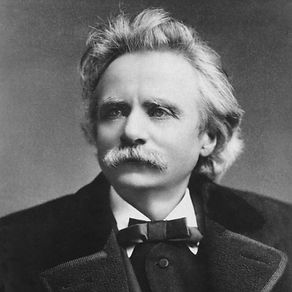PROGRAM NOTES
Holberg Suite
I. Prelude
Edvard Grieg (1843-1907)

ABOUT THIS PIECE
Best known for his incidental music to the five-act play Peer Gynt (1875), which he eventually worked into two well-known orchestral suites, the Norwegian composer Edvard Grieg (1843–1907) was more at home writing pieces for the piano and for chamber groups. His shorter lyric works, including his songs and piano miniatures, demonstrated Romantic-era sensibilities while also drawing on folk-song origins. His suite “Fra Holbergs tid,” or “From Holberg’s Time,” however, was a neo-baroque piece that drew from eighteenth-century styles and forms.
Originally written for piano in 1884, “Fra Holbergs tid” (“From Holberg’s Time: Suite in Olden Style”) was a five-movement French baroque dance suite—a prelude, and then a sarabande, a gavotte, an air, and a rigaudon. The work was commissioned as part of the Holberg bicentenary celebrations; Ludvig Holberg was a celebrated Norwegian author, playwright, and philosopher born in 1684—hence Grieg’s atavistic turn to the baroque. As Mark Laycock has noted, “This deliberate look backward at a revered and thoroughly Scandinavian subject [Holberg], viewed through a Romantic sensibility, resulted in a richly layered, captivating aggregation of antique and contemporary melodic, harmonic, and formal gestures.”
In 1885, Grieg re-orchestrated the suite for string orchestra, setting it in what is now its most popular arrangement. The prelude in particular is well known, with its characteristic bold changes driven by contrasts in volume, harmony, articulation, and melody. With a short rhythmic ostinato overlaid with simple, charming melodies, the prelude is an energetic opening to the suite (and our concert!).
Program notes by:
Dr. Jessica Getman
Assistant Professor of Musicology/Ethnomusicology
California State University, San Bernardino

